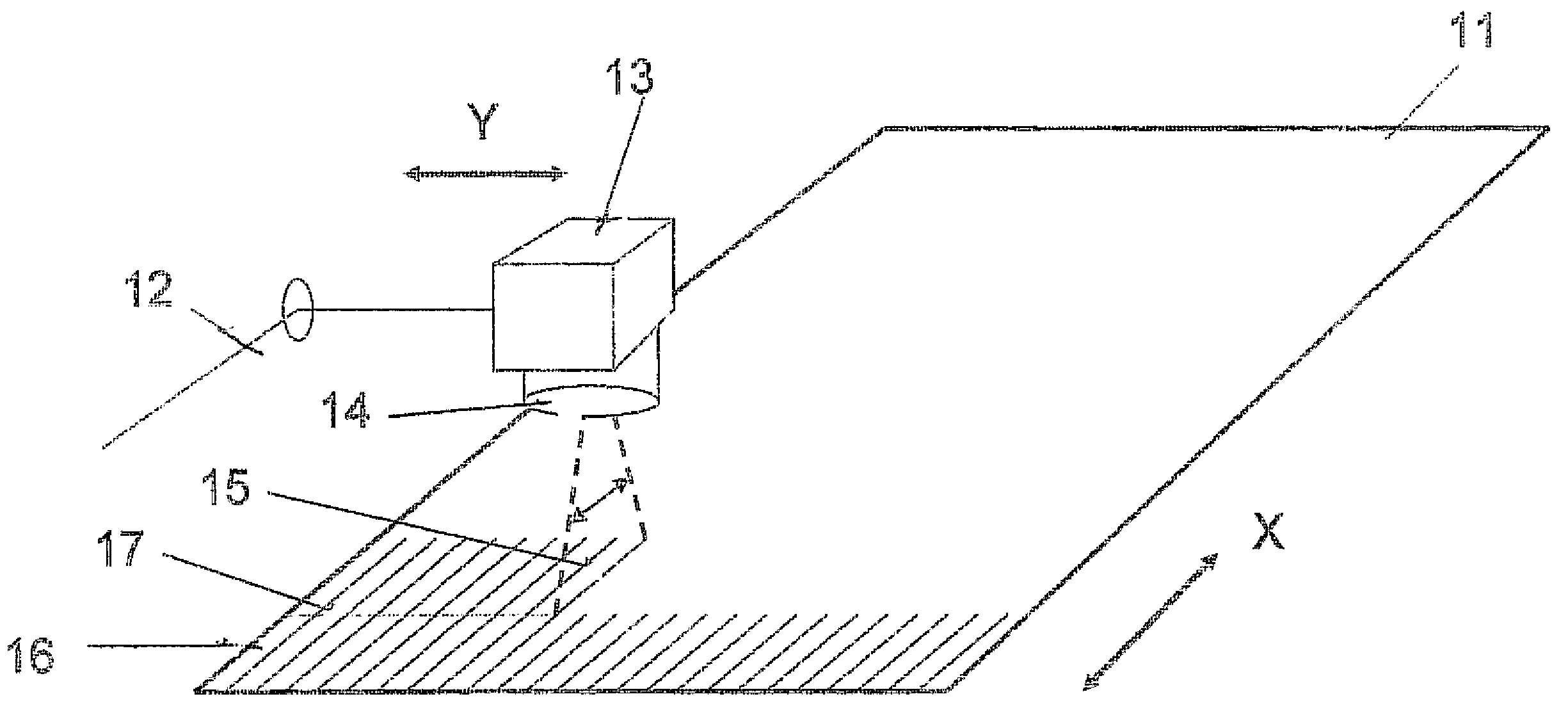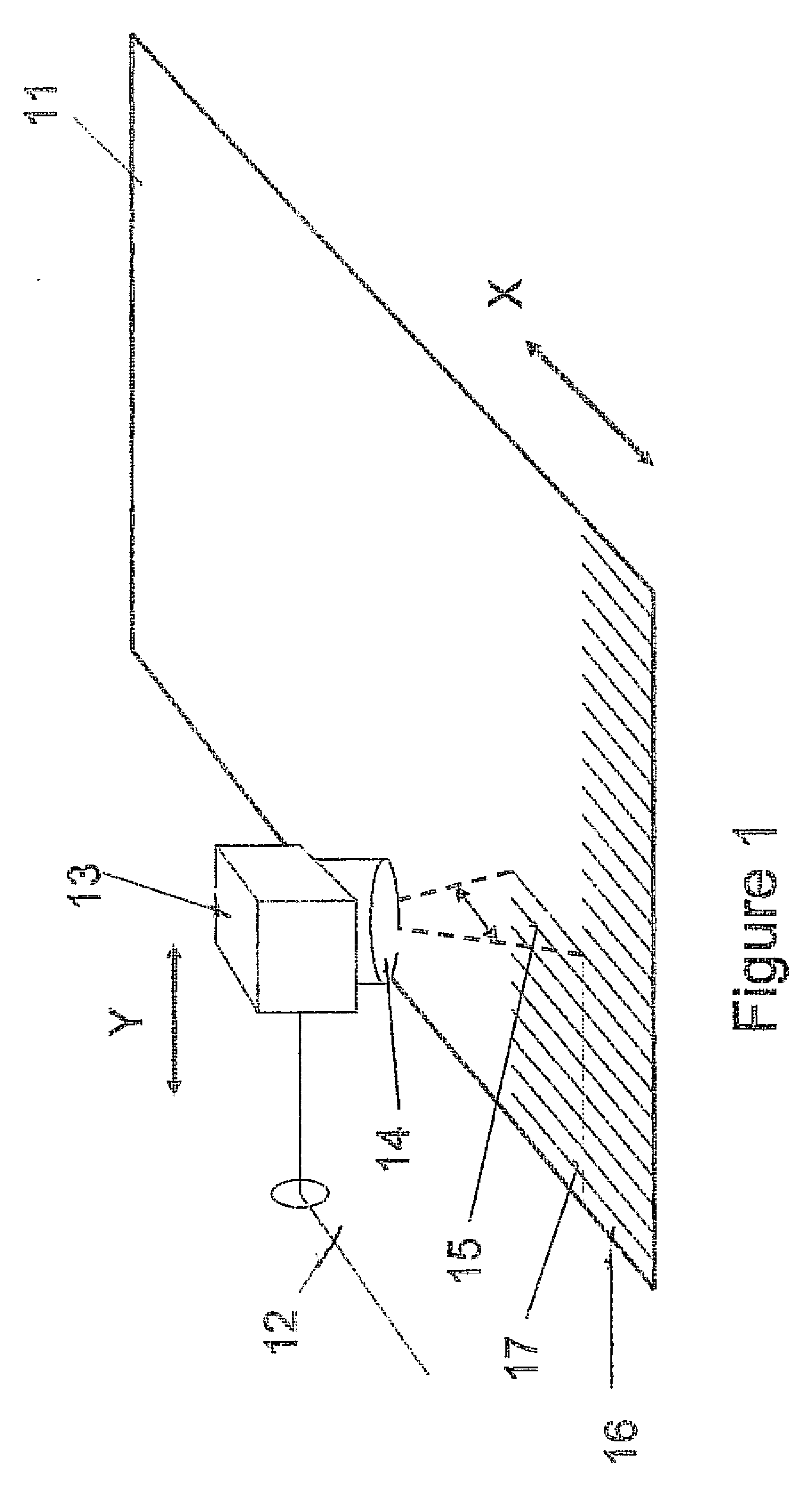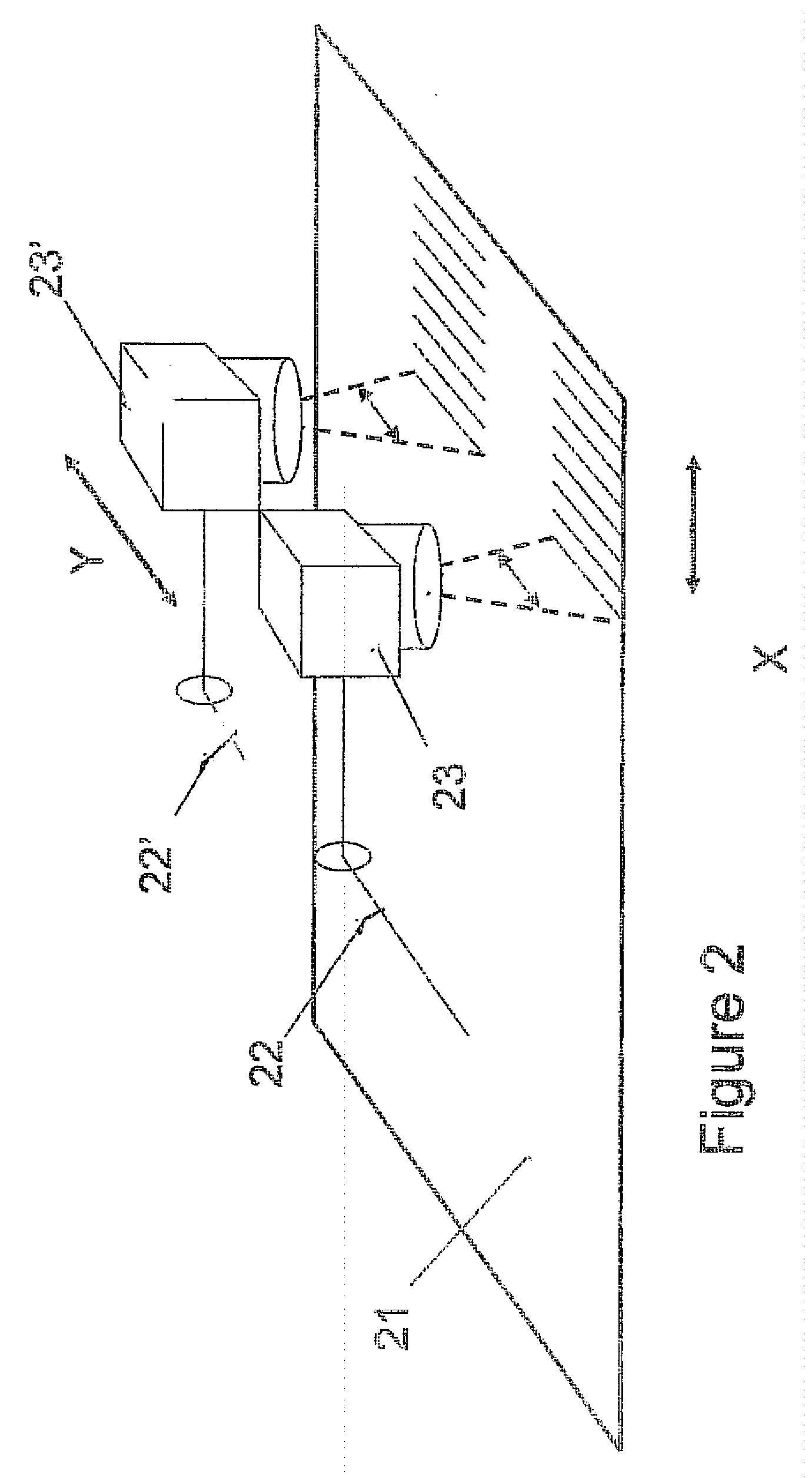Process for laser scribing
a laser scribing and laser technology, applied in the direction of laser beam welding apparatus, photovoltaics, electrical apparatus, etc., can solve the problems of inability to irradiate through the substrate, panel has to be moved very quickly, add complexity to the control system, etc., to achieve accurate maintenance, significantly slow the overall scribing process, and add time to the overall process
- Summary
- Abstract
- Description
- Claims
- Application Information
AI Technical Summary
Benefits of technology
Problems solved by technology
Method used
Image
Examples
Embodiment Construction
[0064]FIG. 1 A large flat solar panel 11 consisting of glass, metal or polymer substrate coated with an ITO or other conducting or semi-conducting layer or combination of layers is mounted on a stage system that allows it to move in one axis X. The requirement is to scribe multiple parallel lines in the coating running parallel to the long side of the rectangular panel in the X direction. The beam 12 from a laser is passed through a two-axis scanner unit 13 and is focussed by a lens 14 onto the surface of the panel in order to scribe lines 15 on the panel. The scanner unit is mounted on a moving carriage on a gantry over the panel so that it can move in the direction Y. Rows of scribe lines in the coating, running parallel to the X axis, are created in a series of bands 16 as shown, where the width of each band is a fraction of the total length of the panel. Each band is created by continuous movement of the scanner in the Y direction while the scanner unit is deflecting the beam ov...
PUM
| Property | Measurement | Unit |
|---|---|---|
| output voltages | aaaaa | aaaaa |
| lengths | aaaaa | aaaaa |
| speed | aaaaa | aaaaa |
Abstract
Description
Claims
Application Information
 Login to View More
Login to View More - R&D
- Intellectual Property
- Life Sciences
- Materials
- Tech Scout
- Unparalleled Data Quality
- Higher Quality Content
- 60% Fewer Hallucinations
Browse by: Latest US Patents, China's latest patents, Technical Efficacy Thesaurus, Application Domain, Technology Topic, Popular Technical Reports.
© 2025 PatSnap. All rights reserved.Legal|Privacy policy|Modern Slavery Act Transparency Statement|Sitemap|About US| Contact US: help@patsnap.com



